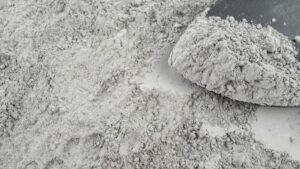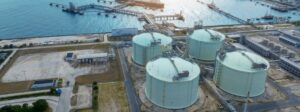
Self-drilling screws are indispensable in modern construction. From fastening roofing sheets to securing wooden frames, they offer efficiency, strength, and reliability. But behind every high-performing self-drilling screw lies a careful balance of metallurgy and material selection. For builders, contractors, and homeowners, understanding these aspects is critical—not only for choosing the right fastener/ baut – mur but also for ensuring long-term durability of structures.
Why Materials Matter in Self-Drilling Screws
Unlike standard screws, self-drilling screws must cut their own pilot holes while maintaining torque and holding power. This dual function demands more from the material. The screw must be hard enough to pierce steel or wood, yet tough enough to resist snapping under pressure.
The choice of base material directly affects:
Drillability: How easily the screw penetrates the surface.
Load Capacity: How much weight and stress it can bear.
Corrosion Resistance: How well it withstands moisture, chemicals, or weather exposure.
Service Life: The longevity of the fastening system.
Common Materials Used
Carbon Steel
Carbon steel is the most common material in self-drilling screws for general construction. Its appeal lies in availability, cost-effectiveness, and strength. Typically, medium-carbon steel is heat-treated to reach the required hardness for drilling tips. However, carbon steel screws need protective coatings (such as zinc plating) to resist corrosion.
Best Use: Indoor construction, drywall, and applications where moisture exposure is limited.
Stainless Steel
Stainless steel offers superior corrosion resistance, making it ideal for roofing, siding, and outdoor projects. Austenitic grades (such as A2/304 and A4/316) are widely used because they resist rusting in humid and marine environments. One challenge with stainless steel is its relatively lower hardness compared to carbon steel, which sometimes requires a carbon-steel drill tip welded to a stainless body.
Best Use: Exterior applications, coastal environments, or anywhere long-term corrosion protection is critical.
Bi-Metal Screws
Bi-metal self-drilling screws combine the best of both worlds. They feature a hardened carbon-steel drill tip for efficient penetration and a stainless-steel body for corrosion resistance. This design ensures durability without compromising drillability.
Best Use: Roofing, cladding, and critical structural applications exposed to harsh weather.
Metallurgical Considerations in Screw Design
Heat Treatment
Heat treatment is a cornerstone of screw performance. The drill tip undergoes hardening to achieve the strength needed to cut through metal sheets. At the same time, the screw’s shank and threads must retain toughness and ductility to avoid brittleness. Achieving this balance requires precise control of heating, quenching, and tempering processes.
Surface Coatings
Protective coatings enhance the lifespan of screws by preventing rust and wear. Common options include:
Zinc Plating: Economical and effective for indoor use.
Hot-Dip Galvanizing: Offers thicker protection for outdoor and roofing applications.
Special Coatings: Advanced finishes, such as ceramic or polymer coatings, provide both lubricity (reducing driving torque) and superior corrosion resistance.
Corrosion Resistance
For building applications, corrosion is often the main failure point of fasteners. Screws exposed to rain, humidity, or salt spray must withstand years of degradation. This is why stainless steel and coated carbon steel screws dominate exterior construction markets. A metallurgically optimized screw not only resists corrosion but also maintains its holding power over decades.
Practical Advice for Builders and Homeowners
Match the Screw to the Environment: For indoor drywall, zinc-plated carbon steel is sufficient. For outdoor decking or roofing, stainless steel or bi-metal screws are a safer investment.
Check the Standards: Reliable self-drilling screws comply with international standards (such as ISO or ASTM). This ensures consistent metallurgy and performance.
Don’t Skimp on Coatings: A low-cost carbon steel screw without proper plating may fail quickly when exposed to moisture.
Think Long-Term: The right screw prevents costly repairs down the line. Choosing a screw with superior materials and coatings pays off in durability and structural safety.
The Bottom Line
The production of self-drilling screws is not just about shaping metal—it’s about mastering metallurgy. Material selection, heat treatment, and surface protection all contribute to the performance and lifespan of these small but critical components. For homeowners and builders alike, choosing screws designed with the right metallurgical considerations means stronger structures, fewer failures, and long-term peace of mind.






